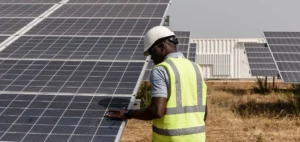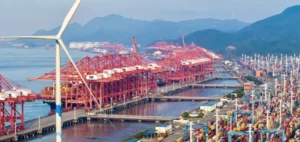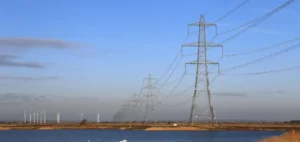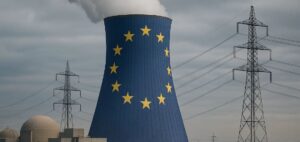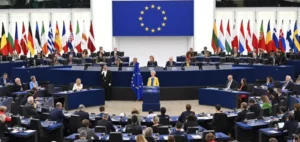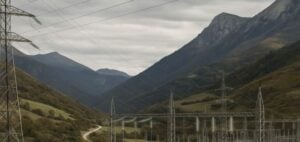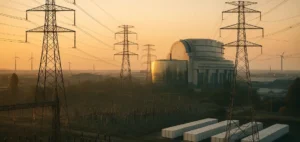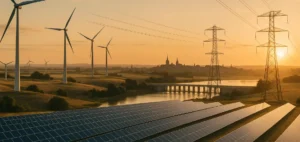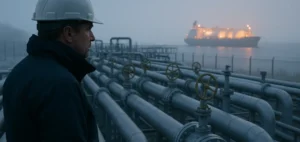The global energy transition is forcing countries to rethink their energy sources, and the United States is no exception. A recent study by the University of Michigan explored the possibility of converting coal-fired power plants (CPPs) into advanced nuclear reactors, a promising alternative for reducing carbon emissions while ensuring stable energy production. At the same time, the European Union and France are also looking at ways to revitalize their coal-mining regions in transition.
Energy Transition and Current Challenges
In 2022, coal-fired power plants accounted for almost 20% of total energy production in the USA, generating 847 million tonnes of CO2, or 55% of total CO2 emissions from the power sector. Faced with these alarming figures, many utilities have incorporated into their integrated resource plans the objective of gradually replacing CPPs with cleaner energy sources, including nuclear power.
Energy transition is also a key concern for the European Union. The recent trips to Slovenia and Croatia by Maroš Šefčovič, Executive Vice President for the European Green Deal, bear witness to this. By taking part in the fifth annual Policy Dialogue of Coal Regions in Transition, Šefčovič reaffirms the EU’s commitment to decarbonization and industrial revitalization.
Advantages of coal-to-nuclear conversion
There are several advantages to converting CPPs into nuclear power plants. Firstly, it enables the reuse of existing infrastructure such as transmission lines and power system components, saving time and costs. What’s more, this transition can maintain jobs and tax bases in surrounding communities affected by the closure of coal-fired power plants.
STAND Evaluation Tool
The University of Michigan study uses the Siting Tool for Advanced Nuclear Development (STAND), developed in collaboration with several US national laboratories. This tool makes it possible to evaluate several sites simultaneously according to socio-economic, safety and proximity criteria, offering a more robust and scalable analysis than previous studies that focused on a few specific plants.
Study results
The 245 CPPs studied were classified into two groups according to their rated capacity. The results show a range of feasibility levels and compromises depending on the site. For smaller power plants, the feasibility score ranged from 51.52 to 84.31 out of 100, with a median of 66.53. For larger capacity plants, scores ranged from 47.29 to 76.92, with a median of 63.97.
The R M Schahfer plant in Indiana was identified as the most feasible site for small electrical capacities, while the AES Petersburg plant, also in Indiana, came out on top for larger capacity sites.
European Reflections on Conversion
In Slovenia and Croatia, discussions on energy transition are also underway. During his recent visits, Maroš Šefčovič discussed green initiatives and the transition of coal-mining regions with national and regional players. In Velenje, Slovenia, he highlighted the revitalization projects and support provided by the Just Transition Fund. In Croatia, discussions focused on integrating clean technologies into the economic growth strategy.
In France, the Émile-Huchet plant in Saint-Avold, one of the last coal-fired power stations, is at the center of political uncertainty. President Emmanuel Macron had announced the conversion of facilities to biomass by 2027. However, this and another hydrogen production project are stagnating due to administrative blockages.
Current initiatives
Similar projects are underway in the United States. TerraPower plans to build a sodium-natrium-cooled fast reactor on the site of a retired coal-fired power plant in Wyoming. The Maryland Energy Administration is supporting the evaluation of a coal-fired power plant conversion with X-energy’s Xe-100 modular reactor. In addition, Holtec International is considering coal-fired power plant sites for its SMR-160, with plans for the first unit as early as 2029. In Poland, NuScale is also exploring options for replacing coal-fired power plants with its reactors, in collaboration with Unimot and KGHM.
The possibility of replacing coal-fired power plants with nuclear reactors is being actively explored in the USA and Europe. Šefčovič’s initiatives in Slovenia and Croatia, as well as discussions in France, show increased thinking about energy conversion, with a focus on collaboration and innovation to overcome obstacles and revitalize coal regions.

